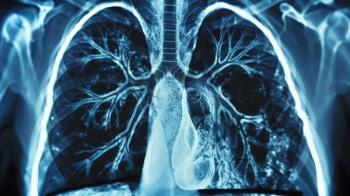
Understanding the Impact of Disease Severity on Quality of Life Patients with ILD in India
More cases of interstitial lung disease (ILD) in India can be traced back to occupational exposure and other environmental causes compared with ILD in the U.S. A different set of exposures may affect the symptoms and course of the disease.
Interstitial lung disease (ILD) is characterized by lung fibrosis, leading to symptoms like breathlessness, fatigue and decreased exercise capacity, which significantly impair patients’ quality of life.
Despite advances in diagnosis and treatment, ILD often progresses unpredictably, and its prognosis remains poor, with high mortality rates worldwide. Diagnosis typically involves clinical evaluation, imaging such as high-resolution CT scans, and pulmonary function tests — especially the diffusing capacity for carbon monoxide (DLCO) — which is highly sensitive in detecting early disease changes and assessing severity, particularly in conditions like idiopathic pulmonary fibrosis (IPF).
Functional assessments such as the 6-minute walk test (6MWT) evaluate exercise capacity and predict mortality, highlighting how lung fibrosis leads to debilitating symptoms that diminish physical and mental well-being.
Despite the high burden, little is known about how disease severity influences health-related quality of life (HRQoL) in Indian ILD patients. Corresponding author K. Vaishali and her colleagues noted that ILDs in India are largely caused by environmental exposures, including smoke from biomass fuels (wood, crop residue, animal dung), outdoor air pollution and occupational exposures. The exposures that play a causative role in ILD in India affect the course and symptoms of the disease and differ from those studied in high-income countries, they noted. Patient perceptions and reports of their quality of life may also be influenced by cultural variables, such as expectations for caregiving, familial obligations and the stigma attached to chronic illnesses, Vaishali and her colleagues said. They also noted that in developing countries such as India, ILDs often underdiagnosed at their early stages due to lack of testing and other factors.
In an effort to discover how it impacts Indian ILD patients, Vaishali and her colleagues explored the relationship between disease severity, functional capacity and HRQoL within the context of India’s environmental, cultural and healthcare landscape.
The study, published May 16 in Scientific Reports, was a collaboration between researchers at the Manipal Academy of Higher Education in Manipal, India, and the University of Sydney in Sydney, Australia, who theorized that understanding these relationships could facilitate better disease assessment and management strategies tailored to resource-constrained settings, ultimately improving patient outcomes.
The cohort consisted of 80 individuals diagnosed with ILD who were treated at Kasturba Hospital in Manipal and were enrolled between September 2020 and December 2022.
On the same day, all participants underwent pulmonary function tests (PFTs), including spirometry (FEV1 and FVC), static lung volumes and DLCO—each compared to predicted normal values—along with a 6-minute walk test (6MWT) conducted twice 30 minutes apart, with the best distance recorded for analysis. Additionally, all 80 completed the mMRC dyspnea scale and the St. George’s Respiratory Questionnaire.
Among the 80 participants, 49% were diagnosed with IPF, 24% with nonspecific interstitial pneumonia, 11% with sarcoidosis, 8% with rheumatoid arthritis-associated ILD (RA-ILD) and 9% with connective tissue disease-associated ILD.
The authors concluded that DLCO percentage predicted had strong correlations with both 6MWD and SGRQ scores, whereas the FVC percentage predicted did not. Specifically, higher DLCO values were associated with better exercise capacity and quality of life, particularly in patients with moderate to severe dyspnea.
Additionally, lung function and exercise performance varied by sex, dyspnea severity and time since diagnosis, with males exhibiting higher DLCO and lower FVC, and those with more severe dyspnea experiencing worse outcomes.
Newsletter
Get the latest industry news, event updates, and more from Managed healthcare Executive.

















































